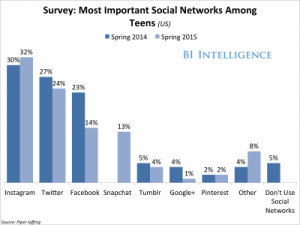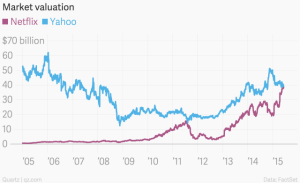VIRTUAL REALITY IS COMING TO A WORLD NEAR YOU
In terms of potential for book marketers, VR is not “next to now” so much as it is next to next to now. But it’s coming:
“So, what’s the SEO and general marketing upheaval linked to augmented and virtual reality? David Amerland, author of Google Semantic Search, states that ‘augmented reality uses semantic technologies to introduce a structured, information-rich layer into the real world environment.’ It must all be keyword-researched, and discoverable by search engines and the searcher. We also must give the user the ability to leave their own mark in the augmented world via content insertion.”
#VR
THE NEW YORK TIMES TARGETS READERS BY TIME OF DAY
To be clear: The NYT has let us target readers by time of day for years now (something this article misses) but what’s new is updated and improved targeting information coming in via Mobile and new Times products such as “Morning Briefing.” This is a smart move by the NYT, and a great way to reach out to potential readers when they’re most open to new ideas.
ARE MARKETERS READY TO THINK VISUALLY?
CMO Council members argue for the importance of new marketing through visual means — .gifs, videos, photos — but find most businesses ill-prepared for this shift in approach.
HERE’S ONE WAY MARKETERS *ARE* THINKING VISUALLY — WITH KIK
Messaging service Kik innovates in the advertising space, using .gifs on sponsored messaging for the movie “Maze Runner: The Scorch Trials”:
“Like the movie’s story, the app’s messaging can go several ways. ‘It kind of feels like one of those choose-your-own-adventure books that you may have played as a kid but played out in a much more modern way,’ said Paul Gray, Kik’s director of platform services.”
YOU GET WHAT YOU PAY FOR
When it comes to ad recall, full-screen interactive ads beat both standard display and rising star units by 20%. (Of course, they’re also a lot more expensive to produce and serve.)
#data
HOW DO YOU REACH MILLENNIAL GUYS?
IMGUR is about to take promoted posts out of beta. With engagement rates of the beta ads at 1-4%, this is definitely a good source for an engaged readership for this demo. Imgur has more than 150 million monthly active users—a mostly young, largely male audience with a reputation for being commercially skeptical. Seventy-five percent of Imgur’s audience is under 35, and 60 percent is between the ages of 18 and 24. Whether they’re book buyers or not is a different question.
FASHION ADVERTISING AND INSTAGRAM: A MATCH MADE IS LUXURY HEAVEN
Fashion brands increase Instagram interactions by 77%. While fashion brands have obvious advantages in an image-centric environment, there are lessons here for all marketers.
Via Dark Matter 050
SOCIAL MEDIA STATS
Stats include: Data on Facebook fatigue real, one measure by which Google+ is out doing Facebook, and the top five activities on Twitter, Google+, and Facebook (which shows one reason why Twitter might be a better promotional vehicle for your message than Facebook).
via Only Dead Fish
IF THERE’S A COMING AD-BLOCK ARMAGGEDON . . .
Here’s a thoughtful piece on the coming ad blocking revolution and what it means for advertisers, publishers, and journalists, and here’s another one, this from QZ.
. . . WILL MOBILE ADS SAVE US?
“Genesis Media, which surveyed more than 11,500 U.S. adults in late May and early June, found that while 24 percent of respondents installed ad blockers on either their home or work computers, just 3 percent did so on their smartphones or tablets.”
MEASURING MOBILE AD EFFECTIVENESS:
-
POINT: WHY WE SHOULD WORRY ABOUT MEASURING MOBILE:
It still comes down to click-through rate and that’s not good enough.
-
COUNTERPOINT: WHY WE SHOULD NOT WORRY ABOUT MEASURING MOBILE:
“Marketers are saying, ‘I can’t drop a cookie, therefore I can’t measure.’ The reality is it’s just as easy, if not easier, to measure in mobile apps, because Apple and Google have given us advertising identifiers.”
4 MARKETING TRENDS TO WATCH FOR IN 2016
A little click-baity for a headline, but it’s a decent list. Having just been to a demo for VR technology at an NYU lab, we can confirm that the future is bright and nearly here for VR technology through such devices as Oculus Rift. And we do think it will change what we mean about “live events” — and, by extension, what we mean by “live marketing.”
INSTAGRAM TURNS ON ITS API
. . . and that means minimum spends will start dropping as it becomes easier to advertise through marketing partners like Hootsuite, instead of going through Instagram sales reps for colossal budgets.












